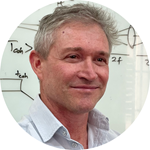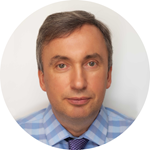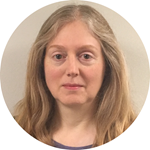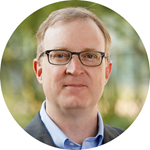Chairs
Frontiers in Optics
 |
 |
|
Andrew Forbes
University of the
Witwatersrand, South Africa
|
Alexey Turukhin
Cisco Systems, USA
|
Laser Science
|
|
 |
 |
Susan Dexheimer
Washington State University, USA |
Robert Kaindl
Arizona State University, USA
|
FiO 1: Fabrication, Design and Instrumentation
Jürgen Czarske, TU Dresden, Germany, Subcommittee Chair
Liangcai Cao, Tshinghua University, China
Tomasz Kozacki, Warsaw University of Technology, Poland
Guoqiang Li, Fudan University, China
Yuan Luo, National Taiwan University, Taiwan
Sung Wook Min, Kyung Hee University, Republic of Korea
Heidi Ottevaere, Vrije Universiteit Brussel, Belgium
Wei Ren, Chinese University of Hong Kong, Hong Kong
Raktim Sarma, Sandia National Lab, USA
Guohai Situ, Shanghai Institute of Optics and Fine Mechanics, China
Florian Wilomitzer, Northwestern University, USA
Lan Yang, Washington University in St. Louis, USA
FiO 2: Optical Interactions
Lyuba Kuznetsova, San Diego State University, USA, Subcommittee Chair
Ayman Abouraddy, University of Central Florida, CREOL, USA
Angela Dudley, University of Witwatersrand, South Africa
Kayn Forbes, University of East Anglia, UK
Khanh Kieu, University of Arizona, College of Optical Science, USA
Erik Schartner, University of Adelaide, Australia
Shawn Sederberg, Simon Fraser University, Canada
Luat Vuong, University of California, Riverside, USA
FiO 3: Quantum Electronics
Xue Huang, Cisco Systems, USA, Subcommittee Chair
Ehab Awad, King Saud University, Saudi Arabia
Robert Fickler, Tampere University, Finland
Jiawen Liu, EPFL, Switzerland
Bienvenu Ndagano,
INRS, Canada
Jason Orcutt, IBM TJ Watson Research Center, USA
Shima Rajabali, Harvard University, USA
Tim Schröder, Humboldt University of Berlin, Germany
Jianwei Wang, Peking University, China
FiO 4: Fiber Optics and Optical Communications
Giovanni Milione, NEC Laboratories America Inc., USA, Subcommittee Chair
Di Che, Nokia Bell Labs, USA
Lawrence Chen, McGill University, Canada
Stanley Cheung, Hewlett Packard Labs, USA
Julia Larikova, Infinera Corporation, USA
Robert Proietti, University of California, Davis, USA
Xinru Wu, Intel Corporation, USA
Mengjie Yu, University of Southern California, USA
Chen Zhu, Baidu Inc., China
FiO 5: Integrated Devices for Computing, Sensing and Other Applications
Yu Li, Shanghai Jiao Tong University, China, Subcommittee Chair
Nathan Lin, AIM Photonics, USA
Arka Majumdar, University of Washington, USA
Aseema Mohanty, Tufts University, USA
Wounjhang Park, University of Colorado at Boulder, USA
Yiwei Peng,
Hewlett Packard Enterprise, USA
Cheng Wang, City University of Hong Kong, Hong Kong, China
Xiaoxi Josh Wang,
Intel, USA
Chao Xiang, University of Hong Kong, Hong Kong
Weidong Zhou, University of Texas at Arlington, USA
FiO 6: Optics in Biology, Medicine, Vision and Color
Wu Yuan, Chinese University of Hong Kong, Hong Kong, Subcommittee Chair
Timothy Baran, University of Rochester, USA
Judith Birkenfeld, Instituto de Óptica "Daza de Valdés" (IO-CSIC), Spain
Donghyun Kim,
Yonsei University, Republic of Korea
Hatice Ceylan Koydemir, Texas A&M University, USA
Sanathana Konugolu Venkata Sekar, Tyndall National Institute, Ireland
Jing Yuan, Wuhan National Lab for Optoelectronics, China
FiO 7: Information Acquisition, Processing and Display
Partha Banerjee, University of Dayton, USA, Subcommittee Chair
Basanta Bhaduri, Tokyo Electric America, USA
Prathan Buranasiri, KMITL, Thailand
Pietro Ferraro, CNR, Italy
Mallik Hussain, Halo Industries, USA
George Nehmetallah,
Catholic University America, USA
Naveen Nishchal, Indian Institute of Technology Patna, India
Elena Stoykova,
Bulgarian Academy of Sciences, Bulgaria
Ching-Cherng Sun,
Central Taiwan University, Taiwan
Hiroshi Yoshikawa,
Nihon University, Japan
Yaping Zhang,
Kunming U. Science and Technology, Thailand
Wenjing Zhou,
Shanghai University, China
Laser Science Subcommittee 1: Nanophotonics, Plasmonics and Metamaterials
Subcommittee Chair: Alexandra Boltasseva, Purdue University, USA
Laser Science Subcommittee 2: Quantum Science
Subcommittee Chair: Galan Moody, University of Califorina, Santa Barbara, USA
Laser Science Subcommittee 3: Ultrafast Dynamics in Complex Systems
Subcommittee Chair: Matthew Graham, Oregon State University, USA
Laser Science Subcommittee 4: Attosecond, Strong-Field and XFEL Science
Shambhu Ghimire, SLAC National Accelerator Laboratory, USA